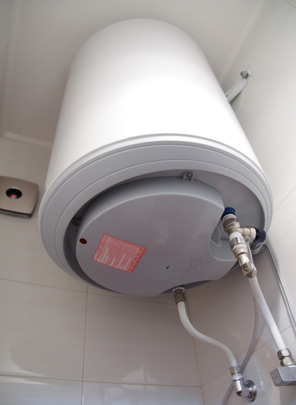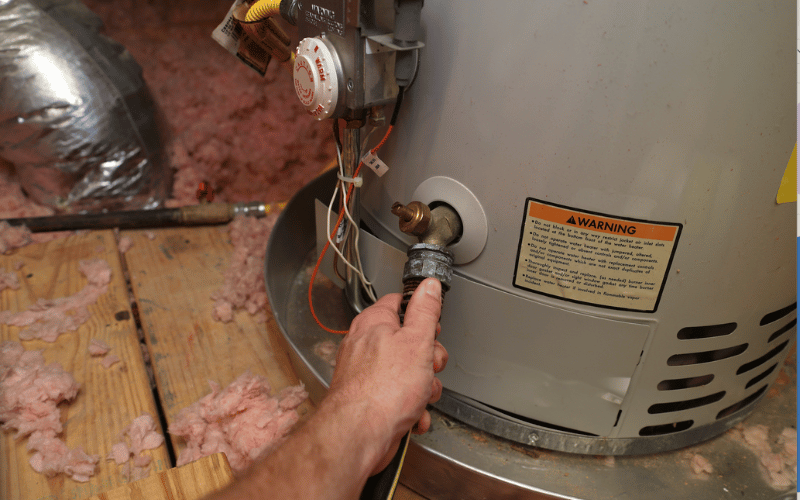Efficient Strategies for Maintaining Your Home's Hot Water System
Efficient Strategies for Maintaining Your Home's Hot Water System
Blog Article
On this page down the page you can discover additional first-rate guidance all about Tips For Maintaining Your Hot Water Heater.

Hot water is vital for daily convenience, whether it's for a refreshing shower or cleaning meals. To guarantee your warm water system runs efficiently and lasts much longer, routine upkeep is crucial. This post supplies practical tips and insights on how to maintain your home's hot water system to avoid interruptions and pricey fixings.
Intro
Preserving your home's hot water system could seem challenging, but with a couple of straightforward steps, you can guarantee it runs efficiently for years to find. This overview covers every little thing from understanding your warm water system to DIY maintenance suggestions and recognizing when to call in professional assistance.
Value of Keeping Your Warm Water System
Regular maintenance not only prolongs the life expectancy of your warm water system but also ensures it operates effectively. Disregarding upkeep can lead to decreased efficiency, higher energy expenses, and even premature failure of the system.
Indications Your Warm Water System Demands Upkeep
Knowing when your hot water system requires attention can prevent major issues. Watch out for indications such as inconsistent water temperature, unusual noises from the heater, or rusty water.
Flushing the Water Heater
Flushing your water heater removes sediment build-up, boosting performance and prolonging its life.
Monitoring and Changing Anode Rods
Anode poles stop rust inside the storage tank. Examining and replacing them when worn is important.
Complex Issues Requiring Specialist Aid
Examples include major leaks, electric issues, or if your water heater is regularly underperforming.
Routine Specialist Upkeep Conveniences
Expert maintenance can consist of detailed examinations, tune-ups, and making sure compliance with safety standards.
Examining and Adjusting Temperature Level Setups
Adjusting the temperature level setups guarantees ideal efficiency and safety.
DIY Tips for Maintenance
You can execute a number of maintenance jobs on your own to keep your warm water system in leading condition.
Looking for Leaks
Regularly evaluate pipelines and connections for leakages, as these can cause water damage and greater bills.
Recognizing Your Hot Water System
Before diving right into maintenance jobs, it's useful to recognize the basic parts of your hot water system. Generally, this consists of the water heater itself, pipelines, anode rods, and temperature level controls.
Monthly Upkeep Tasks
Regular month-to-month checks can help capture minor problems prior to they escalate.
Checking Pressure Alleviation Valves
Testing the stress safety valve ensures it operates correctly and stops too much stress buildup.
Shielding Pipes
Shielding hot water pipelines reduces warm loss and can save power.
When to Call an Expert
While do it yourself maintenance is helpful, some issues call for expert experience.
Verdict
Regular maintenance of your home's warm water system is essential for efficiency, durability, and price savings. By complying with these pointers and knowing when to seek expert aid, you can make certain a reputable supply of warm water without unexpected disruptions.
Water Heater Maintenance: The Basics
Maintaining your water heater will ensure it operates efficiently and has a longer lifespan. Neglecting regular maintenance can lead to costly repairs and an even bigger chunk of your savings if you have to replace it sooner than necessary. But there’s good news: Most water heater maintenance tasks are relatively simple and easy for homeowners with basic DIY skills.
Flush the Water Heater
Over time, sediment and minerals can build up in the tank, reducing its efficiency and potentially causing damage. To flush the tank, turn off the power or gas supply, attach a hose to the drain valve near the bottom and open the valve to drain the water until it runs clear. Ideally, flush the tank annually.
Replace the Anode Rod
The anode rod is a sacrificial metal rod that helps prevent corrosion inside the tank. Inspect and replace it every three to five years or per the manufacturer's recommendation. To replace the anode rod, turn off the power or gas supply, drain a few gallons of water from the tank, unscrew the old rod and replace it with a new one. If the anode rod is significantly corroded or covered in calcium buildup, it's a sign the water heater may need to be replaced soon.
Tune-Up
A yearly tune-up can help identify potential issues and ensure your water heater operates at peak efficiency. This typically involves checking the thermostat, burner assembly (for gas heaters) and any other components specified by the manufacturer. During a tune-up, the technician may also clean the burner and adjust the pilot light (for gas heaters) or examine the heating elements (for electric heaters).
How to Maintain Your Water Heater
Insulate the tank. Insulating the tank can improve energy efficiency and reduce heat loss, saving you money on energy bills. You can purchase precut insulation blankets designed specifically for water heaters or use standard fiberglass insulation wrapped securely around the tank. Check the temperature. The recommended water temperature for most households is around 120 degrees Fahrenheit (49 degrees Celsius). Higher temperatures can increase energy costs and potentially cause scalding. Use a kitchen thermometer to check the temperature at the faucet nearest the water heater. Monitor water pressure. Excessive water pressure can strain the water heater and cause leaks or even tank failure. Install a pressure-reducing valve if necessary. The ideal water pressure range is between 60 and 70 PSI (pounds per square inch). Test the temperature and pressure (T&P) relief valve. The T&P relief valve is a safety feature that releases pressure if the tank gets too hot or the pressure builds up too high. Test it annually by lifting the lever and allowing a small amount of water to release. Replace the valve if it doesn't release water or reseal properly. Check for leaks. Regularly inspect the tank, pipes and fittings for leaks or corrosion. Deal with issues promptly to prevent further damage. Even a small leak can lead to significant water damage over time. Consider a tankless water heater. If your traditional tank-style water heater is nearing the end of its lifespan ( typically 10 years), consider replacing it with a tankless water heater. These units heat water on demand, reducing standby energy losses and potentially saving you money on your energy bills. Schedule professional maintenance. While homeowners can perform many water heater maintenance tasks, it's still a good idea to schedule professional maintenance every few years. A plumber or HVAC technician can thoroughly inspect the unit, identify potential issues and ensure it operates safely and efficiently. https://www.homeserve.com/en-us/blog/home-improvement/hot-water-heater-maintanence/

As a fervent person who reads on Water Heater Maintenance Tips You Can't Afford to Forget, I figured sharing that piece of content was mandatory. Loved our content? Please quickly share it. Let somebody else locate it. Thanks a bunch for being here. Please check our blog back soon.
Set Up An Appointment Report this page